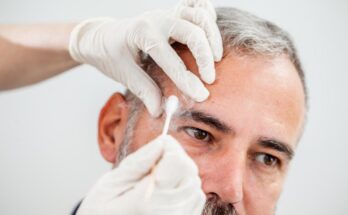Physiotherapy is a highly benedict treatment of the disorder, injuries, and diseases. Using distinct physical methods helps restore the affected area’s function, movement, and mobility. Physiotherapy uses researched information and experiments on how the body functions and uses medically licensed methods for treatment. Physiotherapy is widely popular since people of various ages can receive its benefits by maintaining and managing fantastic shape and health. Also, it prevents any disease or injuries. There are two techniques in physiotherapy, these are Passive Physiotherapy and Active Physiotherapy.
Physiotherapy is a degree-based occupation were skilled, experienced, and well-trained professionals provide the best treatment and care. Physiotherapists do their best to offer you a world-class and most satisfactory service. A good therapist will integrate a healthy combination of active and passive treatments that suit your specific requirements and condition, thus you get the best results.
Know the difference between Passive and Active Physiotherapy
-
Passive Physiotherapy
Passive physiotherapy techniques are treatment methods that do not need the patient to move their joints and muscles. This might be because a patient’s muscles are weak to finish particular exercises. Or that the patient is still undergoing too much discomfort or pain to undertake more active exercises.
-
Active Physiotherapy
Active physiotherapy is another level of passive method wherein a patient will start to notice the actual muscle movement and joints as part of the therapy. This may involve moving joints or stretching muscles, with or without the help of a physiotherapist. As a patient strengthens their damaged muscles and range of motion. They may graduate to walking or using a stationary bike on a treadmill. Massage therapy can also be considered an active treatment method, this includes the movement and kneading of sores. This is necessary for those who are recovering from knee or ankle injuries that need balance practice.
Check out the health benefits of physiotherapy
-
Lessening the dependency on medicines
Physiotherapy is an alternative option to address this issue and lessen the dependency and side effects caused by medicines.
-
Aids in avoiding surgery
Physiotherapy aid in preventing this by healing and managing in the primary stages itself. It is also beneficial in pre and post-rehabilitation programs to alleviate the complications that can happen during the surgery.
-
Reduce pain
Patients from muscle sprain/ strain, arthritis, or tendonitis benefit from using exercises and therapeutic techniques. These therapies aid to ease the pain thereby ensuring normalcy.
-
Improve coordination and strength
While physiotherapy is beneficial to lessen the pain after or during surgery. It helps to boost the robustness and strength of the body.
-
Boost lung capacity and cardiovascular functioning
Physiotherapy provides post-heart stroke patients with a sense of direction and regaining their degree, movement, and balance. You can consult the best physiotherapists for special programs on breathing exercises.




